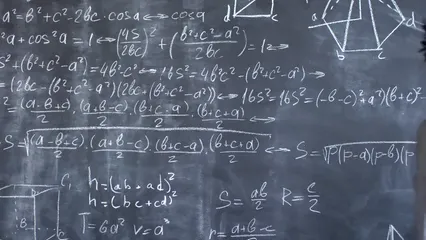
Why Does FFT Need Powers of 2?
Introduction
Have you ever wondered why the Fast Fourier Transform (FFT) often uses powers of 2? This powerful algorithm is crucial in digital signal processing. It quickly converts signals from the time domain into the frequency domain. Many implementations prefer input sizes that are powers of 2. In this section, we’ll explore why this practice is so common and beneficial.
If you’re looking to dive deeper into the world of digital signal processing, you might want to check out Digital Signal Processing: A Practical Approach. This book is an excellent resource for understanding the fundamentals and applications of DSP, and it might just be the missing piece in your signal processing puzzle.

Summary and Overview
The FFT is an efficient algorithm that transforms a time-domain signal into its frequency components. It simplifies the analysis of signals, making it easier to identify frequencies present in a signal. Compared to the naive Discrete Fourier Transform (DFT), the FFT reduces processing time significantly, changing the computational complexity from O(N2) to O(N log N).
Zero-padding is an essential technique to achieve a suitable FFT size. It involves adding zeros to the signal until its length reaches the next power of 2. This process not only conforms to the FFT requirements but also enhances performance and frequency resolution.
In this article, we will dive deeper into the efficiency of FFTs, their performance, and how they are applied in real-world scenarios.

The Importance of FFT Size
Why FFT Requires Specific Sizes
FFT algorithms are designed with specific computational complexities in mind. The radix-2 FFT, for instance, thrives on input sizes that are powers of 2. This design allows the algorithm to exploit efficient memory access patterns and minimize the number of computations needed. When the input size is a power of 2, the algorithm can be divided into smaller, manageable parts, resulting in a faster computation.
As the input size deviates from powers of 2, the efficiency decreases. Non-power-of-2 sizes require additional calculations or transformations, which can slow down the process. Thus, sticking to powers of 2 ensures that you maximize the speed and efficiency of the FFT process.
By understanding these specifics, you can better appreciate why FFT implementations favor powers of 2. This knowledge is key for anyone working with signal processing.

Speaking of efficiency, if you’re setting up your own audio production environment, consider investing in an Audio Interface for Music Production. This piece of gear can make a world of difference in capturing high-quality sound, allowing you to focus on what you do best—making music!
The Trade-offs of Using Non-Power-of-2 Sizes
Using sizes that are not powers of 2 can slow down FFT calculations significantly. This is because most FFT algorithms are optimized for powers of 2. When you use a non-power-of-2 size, the algorithm needs to perform additional operations to handle the input. These extra computations can lead to longer processing times.
Another concern is the need for zero-padding. If your signal’s length is not a power of 2, you may need to pad it with zeros. This process involves adding zeros to the end of the signal until its length reaches the next power of 2. While zero-padding helps meet the FFT requirements, it can also introduce implications on frequency resolution. Specifically, the added zeros can affect how frequencies are represented in the output.
In practice, zero-padding can smooth the frequency spectrum, but it can also dilute the true frequency content of the signal. This means that while you may gain computational efficiency, you might lose some accuracy in frequency representation.

Computational Efficiency of FFT
Comparing FFT to DFT
The Fast Fourier Transform (FFT) is a faster method for calculating the Discrete Fourier Transform (DFT). The key difference lies in their computational complexity. The FFT has a complexity of O(N log N), while the DFT has a complexity of O(N2). This means that as the number of data points increases, the efficiency gains from using FFT become more pronounced.
For instance, consider a scenario with 1,024 data points. The DFT would require about 1,048,576 multiplications, while the FFT only requires around 5,120 multiplications. This stark contrast showcases the significant speed advantage of FFT, especially for larger datasets.

To further enhance your understanding of signal processing, consider picking up The Scientist and Engineer’s Guide to Digital Signal Processing. This book provides practical insights and techniques that can help you apply FFT in your projects.
The Role of Powers of 2 in FFT Performance
Some FFT algorithms, like Cooley-Tukey, specifically leverage input sizes that are powers of 2. This design choice allows the algorithm to divide the problem into smaller, more manageable parts efficiently. For example, in cases where the input size is 1,024, the FFT can easily split the computation into smaller sections of 512, 256, and so on.
Real-world examples illustrate this benefit. In audio processing, using a power-of-2 size can dramatically reduce processing time, allowing for real-time analysis. In communications, where speed is crucial, adhering to power-of-2 sizes enables more efficient signal processing.
In summary, using powers of 2 for FFT not only enhances computational efficiency but also optimizes performance across various applications. This practice is essential for anyone looking to maximize the effectiveness of their signal processing tasks.

Zero-Padding and Its Implications
What is Zero-Padding?
Zero-padding is a technique used in signal processing. It involves adding zeros to the end of a signal. This process adjusts the size of the input signal for FFT calculations. By extending the length of the signal, it aligns with the requirements of FFT algorithms, especially those optimized for powers of 2.
This adjustment is crucial for improving computational efficiency. When the length of the signal is a power of 2, the FFT algorithm can process it more quickly. Zero-padding ensures that your signal fits neatly into the FFT framework, allowing for faster calculations.

To further enhance your audio production, consider using Studio Headphones for Audio Monitoring. These headphones will allow you to hear every nuance in your mixes, ensuring your sound is as polished as possible.
Impact of Zero-Padding on Results
Zero-padding influences frequency resolution and spectral leakage. With increased length, the FFT can provide finer frequency details. This means that the output can better represent the true frequency content of the original signal. However, excessive zero-padding can lead to spectral leakage, distorting the frequency components.
For example, consider a signal with a frequency of 50 Hz. If your original signal length is not a power of 2, zero-padding can smooth out the FFT output. Yet this can dilute the actual representation of that 50 Hz frequency. In cases where precision is vital, such as in audio processing, it’s essential to balance zero-padding with accuracy to avoid misinterpretation of the data.

Alternatives to Power-of-2 FFTs
Using Mixed Radix FFTs
Mixed-radix FFT algorithms can handle input sizes that are not powers of 2. These algorithms break down the FFT process into smaller parts, accommodating various input sizes. This flexibility makes mixed-radix FFTs useful for specific applications where data lengths differ significantly.
For instance, if you’re working with a dataset of 1,500 samples, a mixed-radix FFT can efficiently process this size without the need for extensive zero-padding. This adaptability is particularly advantageous in real-time systems that require quick processing without compromising on accuracy. By leveraging mixed-radix FFTs, you can optimize performance across a broader range of signal sizes.

Efficient Libraries for FFT Implementation
When it comes to implementing FFT, modern libraries like FFTW and NumPy for Python stand out. They efficiently process various input sizes, making them popular choices among developers. FFTW, for instance, is known for its speed. It automatically adapts to input sizes, whether powers of 2 or not. NumPy is another great option, especially for users familiar with Python. It provides a straightforward interface for FFT calculations.
When selecting a library, consider your project needs. For high-performance applications, FFTW is often preferred due to its optimization capabilities. If you’re working with Python, NumPy is user-friendly and integrates well with other scientific computing tools. Always evaluate the specific requirements of your project to choose the best library.

Real-World Applications of FFT
FFT in Audio Processing
FFT plays a crucial role in audio analysis. It helps transform sound waves into frequency components. This transformation allows engineers to assess and manipulate audio signals effectively. For instance, in noise reduction applications, FFT identifies unwanted frequencies and filters them out.
Another application is sound analysis. By breaking down audio signals, FFT enables the detection of specific sound patterns. Musicians and sound engineers utilize this feature to enhance audio quality and clarity. The ability to analyze sound in real time makes FFT an invaluable tool in the audio industry.

To capture high-quality audio, consider using a USB Microphone for Recording. This will ensure that your recordings are clear and professional, making them perfect for any project.
FFT in Communications
In the realm of communications, FFT is essential for Orthogonal Frequency Division Multiplexing (OFDM). This technology divides a signal into multiple smaller sub-signals, each transmitted simultaneously. Using FFT, these signals are processed efficiently, allowing for high data rates and robust performance.
One of the main advantages of FFT in communications is its ability to handle interference. By analyzing and managing sub-carriers, FFT minimizes signal distortion. This capability is crucial for modern wireless communication systems, ensuring reliable data transmission even in challenging environments. FFT’s efficiency and effectiveness continue to shape the future of communication technologies.

Conclusion
In this article, we explored why using powers of 2 in Fast Fourier Transform (FFT) implementations is crucial for efficiency. First, we highlighted the significant computational advantages of FFT over naive Discrete Fourier Transform (DFT) methods. The complexity drops from O(N2) to O(N log N), making FFT a game-changer in digital signal processing.
Next, we discussed how algorithms like the radix-2 FFT take full advantage of input sizes that are powers of 2. This choice allows for efficient memory access and reduces computation time. On the other hand, non-power-of-2 sizes can lead to slower performance due to extra calculations required.
Finally, we encouraged readers to consider the implications of FFT sizing in their projects. By understanding the importance of powers of 2, you can ensure optimal efficiency and accuracy in your signal processing tasks.

If you’re looking to enhance your workspace for better productivity, consider a Home Studio Desk. A well-organized setup can make a huge difference in your workflow and creativity.
FAQs
What is FFT, and how does it work?
FFT, or Fast Fourier Transform, is an efficient algorithm to compute the Discrete Fourier Transform (DFT). It transforms a time-domain signal into its frequency components, simplifying signal analysis.
Can I use FFT with non-power-of-2 sizes?
Yes, you can use FFT with non-power-of-2 sizes. However, this may reduce speed and efficiency. Additional calculations or zero-padding may be necessary, impacting results.
What are the best practices for zero-padding in FFT?
Zero-padding is effective when your signal length is not a power of 2. Add zeros until reaching the next power of 2 to enhance computational efficiency and frequency resolution.
Why is computational efficiency important in FFT?
Efficiency is crucial for real-time applications. Faster processing times allow for quicker analysis and response in systems such as audio processing and telecommunications.
What libraries can I use for FFT implementation?
Popular libraries include FFTW, NumPy, and MATLAB. Each offers unique features and optimizations for various input sizes, making them suitable for different projects.
How does FFT impact audio processing?
FFT is essential in audio applications for analyzing sound waves. It allows engineers to identify frequencies, filter noise, and enhance audio quality effectively.
Please let us know what you think about our content by leaving a comment down below!
Thank you for reading till here 🙂
Understanding why FFT implementations prefer powers of 2 is essential for optimizing performance in digital signal processing. why does fft need powers of 2
All images from Pexels




